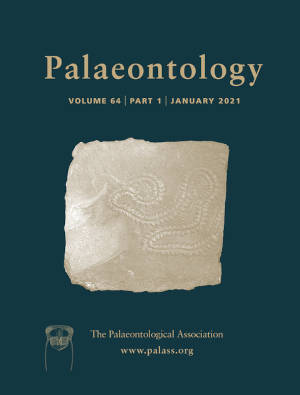Reg. Charity No. 1168330

Conodont animals were early jawless vertebrates equipped with a feeding apparatus composed of several tooth‐like elements. The P1 elements, at the rear of the apparatus, were characterized by a robust shape and rapid morphological evolution. Occlusion occurred between paired right and left P1 elements, occasioning some bilateral asymmetry, which, together with allometric growth, may partially obliterate the temporal differences. The present study aims to disentangle these different components of morphological variation in Late Devonian Polygnathus P1 conodont elements. An extensive 2D geometric morphometric analysis of the platform shape was performed through the Famennian record of two outcrops. This analysis was completed by a 3D study on a subset of conodont elements. The 2D and 3D morphometric quantifications provided highly congruent results, showing that the 2D shape constitutes a good approximation of the element geometry. The 3D analysis delivered further insights into the relationship between the geometry of the elements and the constraints related to occlusion. The 2D analysis allowed a quantitative assessment of the variation among species and through time. Allometry and bilateral asymmetry were differently expressed depending on the species considered, suggesting that constraints imposed on pairing by the morphology of the elements varied even among related species. The within‐species variation was so important that it largely obliterated temporal trends; a relationship of Polygnathus shape and conodont biofacies variations through the Famennian nevertheless suggested an evolution driven by ecological interactions between conodont genera.